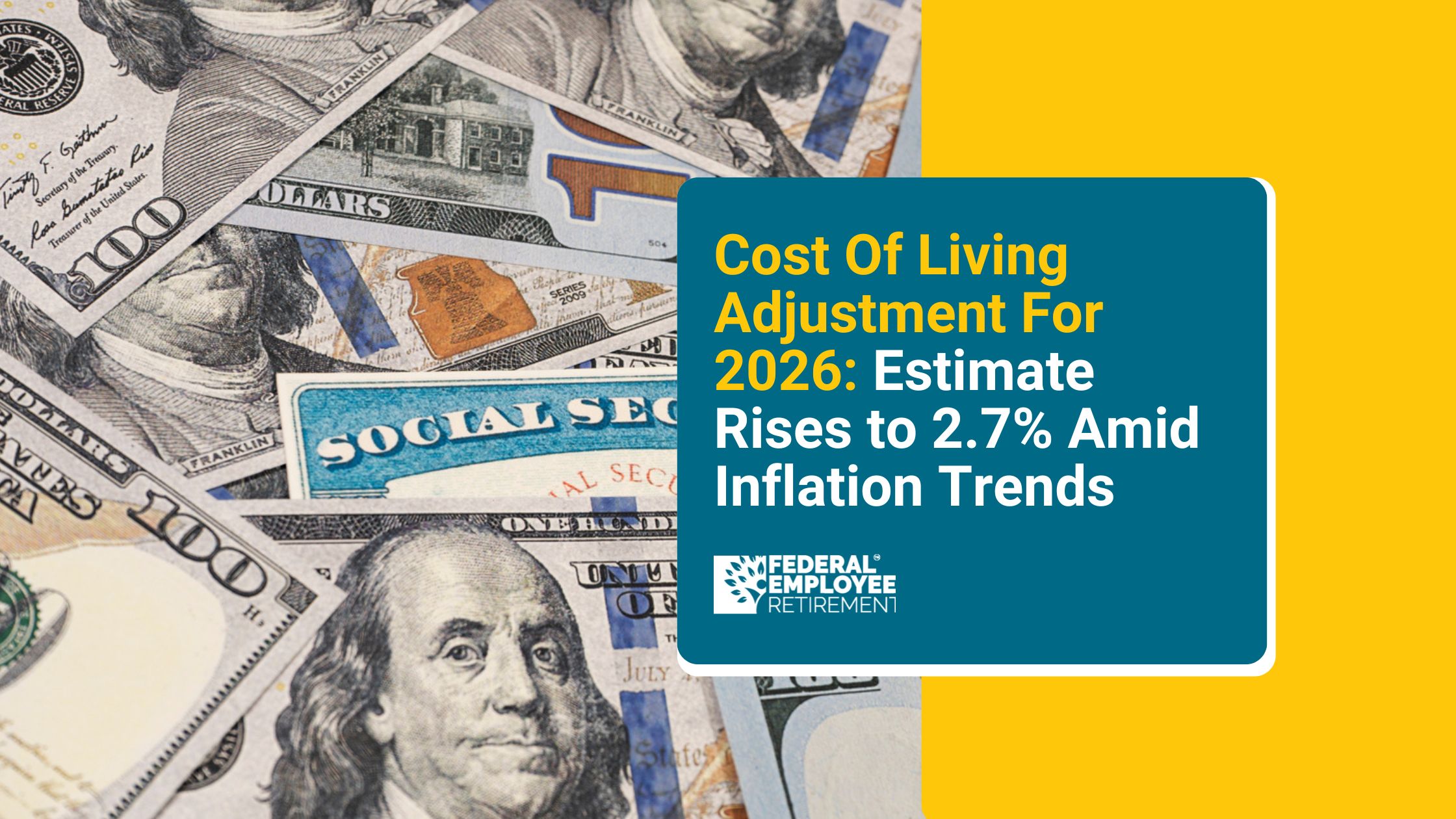You’re not alone; 4,359 federal employees booked their free review.

2026 Social Security COLA: Projected 2.7% Increase for Retirees
Inflation is easing, but higher Medicare premiums may cancel out benefit gains for millions of Americans.
cost of living adjustment for 2026 may receive a 2.7% raise in 2026, according to the latest estimates based on June inflation data. This updated forecast, up from 2.5% last month, comes as the Consumer Price Index for Urban Wage Earners and Clerical Workers (CPI-W) rose by 2.6%, according to the U.S. Bureau of Labor Statistics.
The projected cost of living adjustment (COLA) for 2026 is designed to help retirees, disabled workers, and survivors preserve purchasing power amid inflation. Yet experts warn that higher Medicare premiums may outpace these benefits for many Americans.
What’s Driving the COLA Estimate Up?
The COLA is primarily calculated using the CPI-W, which increased by 2.6% in June. Broader inflation rose to 2.7%, up from 2.4% in May. Though the Federal Reserve continues to target 2% inflation, recent macroeconomic pressures including tariff-driven price hikes have kept inflation slightly elevated.
According to Barron's, the expected 2.7% COLA is driven by inflation in housing, services, and medical care, despite lower energy prices. These broader economic pressures are nudging the COLA upward in 2026.
Medicare Premiums Rising Sharply
While Social Security checks may rise, Medicare Part B premiums are also expected to increase significantly. The 2025 Medicare Trustees Report projects Part B premiums will jump from $185.00 in 2025 to $206.50 in 2026 a rise of $21.50, or 11.6%.
This increase would mark the steepest hike since 2022’s 14.5% jump. Independent policy analyst Mary Johnson warns that “It’s not uncommon for Part B premiums to consume much or even all of the annual COLA, leaving little extra to cover other big cost increases.”
Hold-Harmless Rule Offers Some Protection
Beneficiaries should be aware of the federal "hold-harmless" provision, which ensures that Social Security benefits will not decrease due to higher Medicare premiums. However, for those receiving very low monthly benefits, the increase in Medicare may effectively consume most or all of the COLA, even if the benefit amount itself doesn’t decline.
Impact on Low-Income Beneficiaries
Low-income Social Security recipients especially those receiving less than $800 per month may find that the COLA barely offsets healthcare costs. As Mary Johnson noted, "This is particularly true for individuals receiving low Social Security retirement, spousal, or survivor benefits."
According to MarketWatch, millions could see their COLA cancelled out completely. The average Social Security benefit is currently $1,860.64, but after Medicare deductions, many recipients will feel little to no net gain.
How the COLA Is Calculated
The Social Security Administration determines the final COLA based on the average CPI-W for July, August, and September 2025. The official announcement will be made in October. July’s CPI-W, the first in the three-month window, will offer a crucial early signal.
As of June, CPI-W was up 2.6% year-over-year, supporting the 2.7% forecast. However, further inflation readings could raise or lower the final COLA figure.

How Many People Are Affected?
More than 74.2 million Americans receive Social Security benefits, including retirees, disabled workers, and survivors. Even small changes in COLA have broad financial implications.
What Can Retirees Do?
- Track Inflation: Watch July September CPI-W reports.
- Understand the Hold-Harmless Rule: Know that benefits won’t decrease due to rising premiums.
- Review Your Medicare Plan: Higher premiums could justify reviewing Advantage or supplemental options.
- Consult a Retirement Planner: Strategise around income protection, COLA impact, and benefit optimisation.
Worried Your COLA Increase Will Be Eaten by Medicare? We Can Help
Even with a projected 2.7% COLA in 2026, rising Medicare premiums may reduce your actual benefit increase. At Federal Pension Advisors, we help federal retirees protect income, navigate Medicare, and optimise retirement plans. Book your Free Consultation only 13 spots are left.
- Free Pension & Benefits Review
- Strategies to Offset Medicare Deductions
- TSP, FERS, and Annuity Optimisation

Bottom Line
The Social Security COLA for 2026 is now projected at 2.7%, slightly higher than last month’s estimates. However, the sharp 11.6% increase in Medicare Part B premiums may erode the gains for millions.
For retirees, the key takeaway is to stay informed, budget carefully, and consult professionals to prepare for rising healthcare costs and limited COLA relief.
FAQs
What is the predicted COLA for Social Security in 2026?
The latest estimate for the 2026 COLA is 2.7%, based on June 2025 inflation data. This figure will be confirmed in October 2025 following analysis of CPI-W data from July through September.
How much will Medicare Part B cost in 2026?
According to the Medicare Trustees Report, the standard Part B premium is projected to rise to $206.50 in 2026, up from $185.00 in 2025.
What will the COLA for Social Security be in 2025?
The confirmed COLA for 2025 is 3.2%. This adjustment was applied in January 2025.
What is the new Social Security check for January 2025?
The average Social Security benefit in January 2025 is approximately $1,907, up from $1,860.64 due to the 3.2% COLA.


Get Updated
Subscribe to our weekly updates for the latest on retirement planning, federal benefits, exclusive webinars, and more!
Download Federal Retirement: Step-by-step Checklist
This comprehensive guide will help you understand your federal benefits, optimize your savings, and plan for a comfortable future.



.png)








